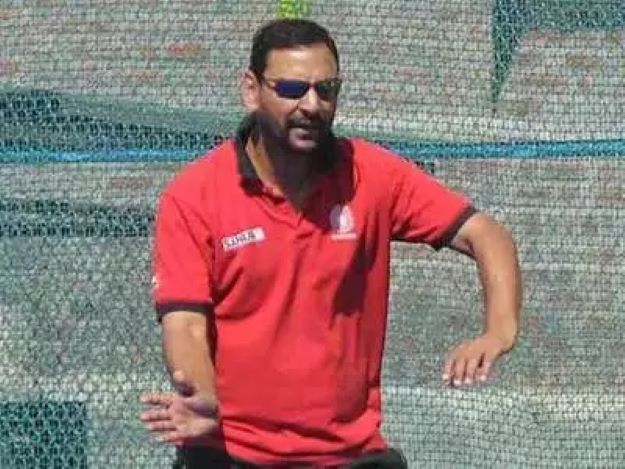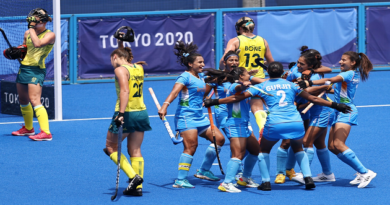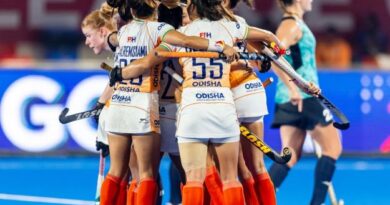Time for Players to Shoulder More Responsibility: Indian Women’s Team Coach Harendra Singh
The Indian women’s hockey team is striving to pick up the pieces after a disappointing 8th place finish at the 2023-24 Pro League – this was after ‘even the bigger disappointment’ of being not able to qualify for the 2024 Paris Olympics – a ‘new low’ plumbed by a side that had reached the semifinals of the 2021 Tokyo Olympics and nearly missed out on what could have a historic bronze medal.
The poor run of results meant saw Janneke Schopman stepping down and was replaced by Harendra Singh. Harendra took charge midway through the 2023-24 Pro League in the Antwerp and London legs (effectively 8 games). The 54-year-old coach, a former India fullback, spoke to Hockey Passion in an exclusive interview.
Excerpts:
Q You took charge of the Indian women’s team in the middle of the 2023-24 Pro League. India lost all their eight games at Antwerp and London – give us your perspective on how the Indian eves are shaping up?
The one thing I knew after taking charge was that the team was struggling on two fronts – fitness and injuries and these are areas you cannot effectively address in a short span of time. As many as seven to eight players were carrying injuries (knee, hamstring, ankle injury, etc) and struggling to cope as rehabs take time. We sat with the team and clearly told them that I’m not looking for spectacular results and was more focused on whether we are making day-to-day improvements. Are we progressing on a daily basis? Are we bridging the gap from the Antwerp leg of the Pro League or are we still at where we were at Antwerp? If you look at our first game against Argentina at Antwerp which we lost 0-5, we just had 7 shots at goal and were all the time defending. But if you at the London games against Great Britain and Germany we doubled our circle penetrations (around 13-14 CPs), which means we doubled our attacking line and were effectively closing down the gap. Our performance in the London leg marked a distinct improvement compared to the Antwerp leg. Our mission is to be a super-fit side who can take on the best in the world. It’s a process and we have achieved 60-70% of what we desire, in terms of fitness, and I can vouch for one thing you would see a much transformed Indian women’s side in the upcoming Asian Champions Trophy.
Q Indian women’s hockey appeared to build on the 2021 Tokyo Olympics 4th place campaign and dished out a stellar performance in the 2021-22 Pro League finishing third. What do you think could have led to a drop in our performance after that?
I believe we may have lost focus or direction and were not meeting the demands of modern hockey. It’s not about the management only, players must show some degree of onus. In a high performance environment, you cannot just blame the management – the management only provides facility. The facilities at the Sports Authority of India (SAI), Bengaluru are the best in the world. There is a perception that SAI being a government entity is not good – they do an awesome job behind the scenes which is not always acknowledged.
Everything does not boil down to coaches, strength & conditioning coach, etc. Look, when I was the Indian women’s team coach in 2017, yo yo test of the girls was around 18.7 and in 2024 it is 18.3. So, there is not much difference. Modern hockey is all about ‘speed’. It is no more about man-to-man marking but all about zonal marking. Adaptation is the key – players have a tough job to work on their fitness – it is also tough on management to ensure team fit and injury-free. I’m looking to drive mindset change in the team – it is time for the girls to shoulder responsibility – they should drive the car and the coaches and support staff would help them which side they need to go.

Q What’s your take on ‘High-Speed Running’ in modern hockey?
Modern hockey is all about ‘high-speed running’ something nobody talks about and not about kms. In an average match if you are able to run 300-350 km in ‘high-speed running, it means your team is close to the top-level fitness and can compete with any side in the world. Typically, on an average, a defender, midfielder and forward ends up doing 6-9 kms, 6-7 kms, and 7-9 kms respectively. I remember Indian men’s player Sumit who can finish 23.3 or 24 in yo-yo test – it is genetic so you can’t compare one player to another. At times, we see Harmanpreet Singh play 51-52 minutes despite the rolling substitutions depending on different scenarios like the Olympic quarterfinal against Great Britain, where he played for a lengthy period owing to the early red card handed out to Amit Rohidas.
Q You had served as the coach of the Indian women’s team in 2017. Has this second stint is easier, in terms of getting used to the team environment after your return from USA considering you know most of these girls?
It’s far easier to operate than getting the feeling of being thrown in the ocean. I know the likes of Savita, Sushila, Navneet Neha, Vandana closely – even some of the junior girls who have come to the senior fold are known to me. It’s fantastic to work with them – they are more hungrier and a hugely disciplined lot.
Q There is a scarcity of drag-flickers in women’s hockey. Your thoughts.
I would partially agree and partially disagree to this line of thought. We are the top coaches and what are we doing then? Are we not looking at women hockey as skillful, fascinating, and exciting as the men’s hockey? Developing drag-flickers is a long-term investment and involves a lot of planning. Unfortunately, people lose time and resources focusing on results. Women’s hockey have a huge viewership like men’s hockey and the only thing missing is quality drag-flicking. Coaches including me, must plan, investing for the future and not look for instant coffee – See how China roped in the services of Dutch drag-flicking expert Taeke Taekema and how they have performed in the Paris Olympics.
Q Hockey India has talked about setting up a drag-flicking academy. Your thoughts.
I had a good discussion with Hockey India top-brass about setting up a drag-flicking and goalkeeper academy. Hockey India is serious about it and it would be the world’s first drag-flicking and goalkeeper academy.
Q So much has been said about Rani Rampal – do you see a playing future for her in the national side?
To be honest, Rani Rampal does not fit into my plans for the 2026 Asian Games, 2026 World Cup and 2028 Olympics. She has had a great playing career for India and time has come for her to wear a new hat. She is a versatile forward like Dhanraj Pillay and she has a lot to offer in grooming youngsters and I’m open about working with her as a non-player.
Images Credit: Hockey India




